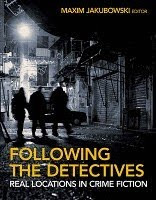Craig Rice, crime, humor, and empathy, with two questions for readers
The protagonist is Rice's impecunious Chicago lawyer John J. Malone, so you know the laughs will be there, but with a hard edge. (Of course, the best comic crime novels have always leavened the jokes with profound sympathy, or at least empathy, for victims, dupes, and even criminals. Think of The Thin Man.)
I'm about two-thirds of the way through the book, and only twice, for a total of two or three words, has a laugh line seemed even slightly forced or cheap. The rest to the time Rice juggles humor, suspense, domestic interludes, and dark empathy, and keep all the balls in the air.
And now, your question: When does humor become too much in a crime novel or story? When the humor is just right, and what makes it so?
* OK, maybe The Lucky Stiff is noir. I shall be happy to discuss this further once you have all read the book.
© Peter Rozovsky 2015
Labels: comic crime fiction, Craig Rice, Humor, John J.Malone, miscellaneous, The Thin Man

































